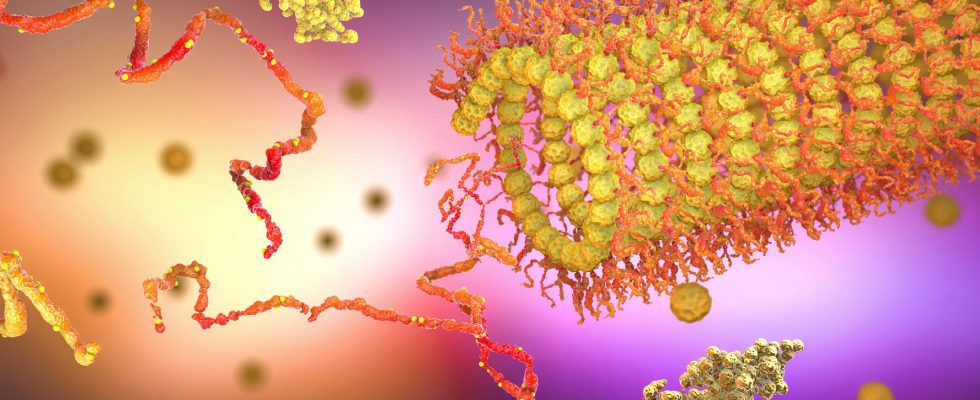While the term protein is familiar to almost everyone, so-called peptides cannot be clearly defined for everyone. Both proteins and peptides are made up of amino acids, but despite similarities, there are structural differences. FITBOOK presents the most important facts about peptides and explains the role that amino acid chains play in healthy nutrition.
This article dives into the fascinating world of peptides, which, among other things, have far more to offer for nutritional medicine than many people know. Just like proteins and amino acids, the molecules can rightly be called the basis of life.
What are peptides?
The term peptide goes back to the German chemist Hermann Emil Fischer. By definition, it is an organic molecule consisting of up to 100 amino acids in a row, which are linked to one another via so-called peptide bonds.
Chemical Classification: Biochemical Basics
Peptides are formed during protein biosynthesis (protein construction) when the carboxyl group (-COOH) of an amino acid reacts with the amino group (-NH2) of another amino acid. This creates a peptide bond. Because a water molecule is split off during this reaction, this process is also known as a condensation reaction.
Difference between peptides and proteins
Although both proteins and peptides are molecules consisting of chains of amino acids, there is a clear distinction with regard to the respective chain length: While proteins are made up of over 100 linked amino acids, peptides contain between three and a maximum of 100, depending on the type Amino acids.
Since protein is broken down into its cleavage products, peptides and amino acids, during proteolysis (breakdown of proteins), peptides are also referred to as cleavage products of proteins.
Also interesting: What are hormones and how do they work?
types of peptides
Peptides differ in their amino acid chains.
- oligopeptides: Oligopeptides are peptides in which three to ten amino acids are linked together. Depending on how many amino acids are connected, one speaks of a di- or tripeptide, for example.
- Polypeptides: If more than ten to 100 amino acids are linked via a peptide bond, one speaks of polypeptides.
Their importance for the body
Peptides are not only structural elements – among other things in the construction and renewal of endogenous proteins – but they are involved in numerous physiological, hormonal and neurological processes due to their biological and functional properties. With regard to nutrition, they play an important role as an intermediate product in protein metabolism.
The functions
- Signaling substances (including peptide hormones)
- storage substances
- Neurotransmitters (neuropeptides)
- Component of enzymes (biocatalysts)
- structural elements
- biological engines
- Transport elements (carriers)
Occurrence in food
Basically, the molecules are contained in protein-rich sources – in both plant and animal foods. There are no special nutritional recommendations for intake, as these are attributed to the protein requirement.
In protein-rich foods such as legumes and the like, peptides are usually present in a bound, inactive form. Only when they are broken down as part of proteolysis – in which protein is broken down into its components – do bioactive peptides arise. However, there are foods such as milk and milk products that already contain bioactive molecules.
Medicine in particular relies on the great health potential of these bioactive peptides (see next paragraph).
More articles about nutrition
use
In addition to their natural occurrence in the body, peptides are also used in synthetic form as medicines, artificial sweeteners such as aspartame (dipeptide) or as a nutrient supplier for artificial nutrition.
In medicine, they are used, for example, in autoimmune diseases, in cancer therapy, as vaccines or antibiotics. In this regard, some types of peptides are said to have antibiotic, blood pressure and cholesterol lowering, antiviral, anti-inflammatory and analgesic effects.
Sources
- Spektrum.de. peptides. (accessed on June 14, 2023)

